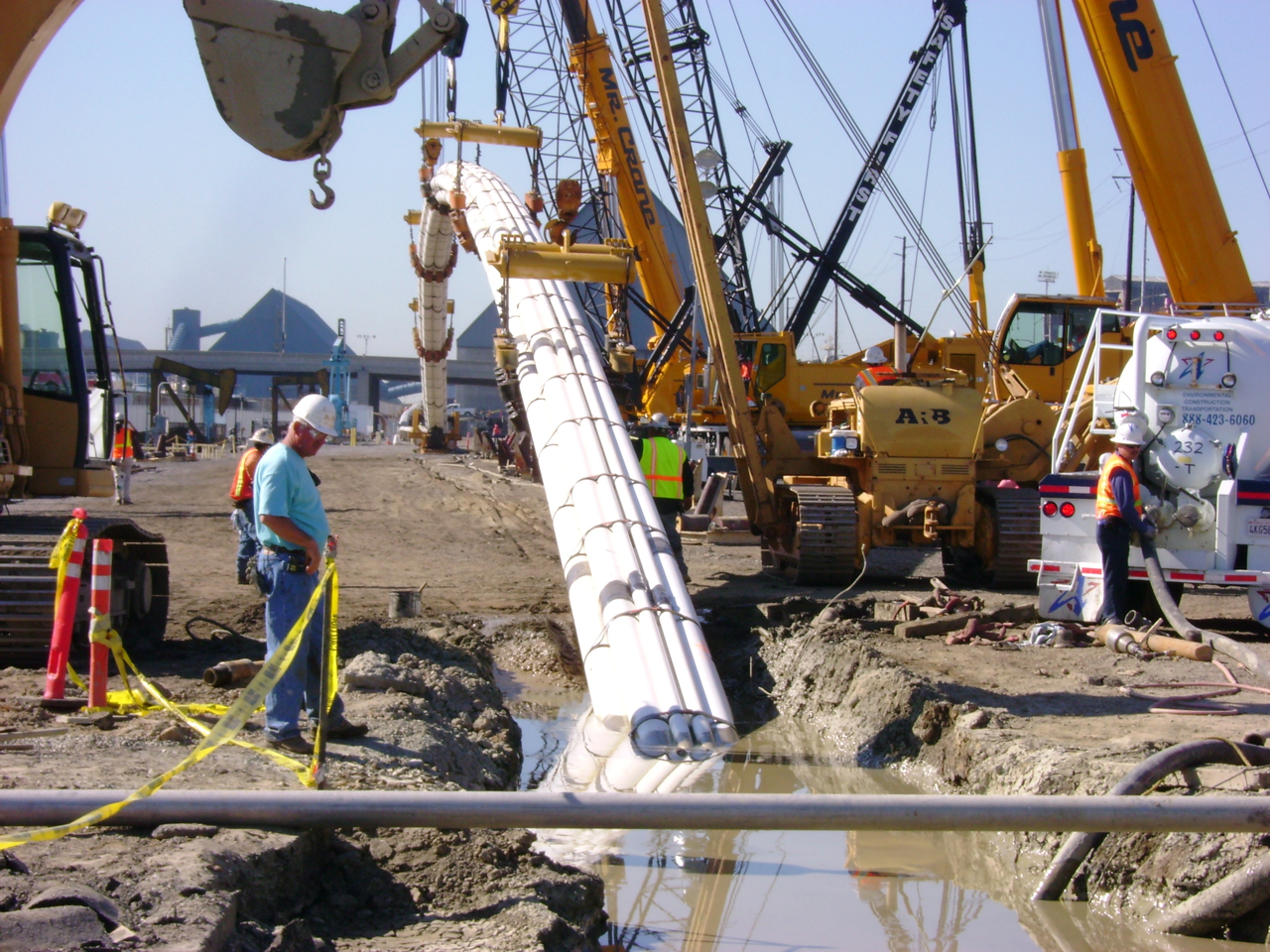July 2010 Vol. 237 No. 7
Features
Field Coating Girth Welds On 10 Bundled Casing For 2,100-Foot HDD

Horizontal directional drills are commonly used when it’s either impractical or impossible to dig a trench, such as under a highway, body of water, or railroad. The basic process consists of drilling a pilot hole, reaming it to the appropriate size, and pulling the new section of pipe back through the bore.
How do you take that difficult process, which is fraught with challenges, and make it even more challenging? You ream the bore to a diameter of 54 inches, and instead of pulling one new pipe section through it, you pull 10 bundled casings, totaling nearly 2,100 feet in length.
In September 2009 an engineering firm in charge of the design for this directional drilling project contacted Jim Tolly, technical sales representative for Corrosion Control Products Company, for assistance. The project consisted of 10 bundled pipe casings, including: 3 – 14-inch; 2 – 12-inch; 2 – 10-inch; 1 – 6-inch; and 2 – 4-inch. The client was interested in coating options for the girth welds along the various casings.
When deciding on which field applied girth weld coating to approve for use, the engineering firm had to ensure that the field applied coating: 1) was designed for use in a directional drilling application; 2) was compatible with the plant applied coating; and 3) would perform similarly to the plant applied coating.
Pipelines pulled through the bore of a directional drill are subject to stresses that can easily damage or destroy protective coatings. Rock, shale, and gravel can cut through or abrade coatings all the way to the pipe surface. Consequently, coatings used in directional drill projects are typically sturdier and more abrasion resistant than those used in direct bury applications. Additionally, girth weld coatings are sometimes viewed as being the weak link in the pipeline coating chain, adding to the importance of choosing the right product for the job.
The plant applied coating on the casings was a 3-layer polypropylene system. Tolly worked with the engineering firm to specify Canusa-CPS TBK-PP65 Heat-Shrinkable 3-Layer Directional Drilling Kits for the girth welds, which were previously used on directional drills in the project area and which have a long history of successful use. The system is comprised of a 100% solids epoxy, a heat shrink sleeve with polypropylene backing and hot-melt adhesive, and a secondary heat-shrinkable sleeve which functions as a sacrificial wear cone.
In January, the pipeline contractor started work on the project and by early February was ready to coat the girth welds. Corrosion Control Products Company supplied the contractor with Canusa-CPS TBK-PP65 Kits, and along with Canusa-CPS, Tolly provided onsite contractor training.
In order for the end result to be a high quality product, the contractor’s installation personnel and the pipeline owner’s quality control representatives were trained in proper pipe surface preparation and the directional drill kit installation, inspection, and repair.
Ultimately, the challenges led to solutions that brought successful results. In early April the bore had been reamed to size and the pullback was made. The casings are in place and will allow the enclosed pipelines to transport oil, water, gas, electrical and instrumentation cables from their sources to their destinations.





Comments